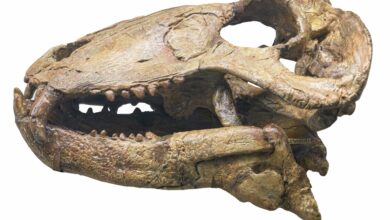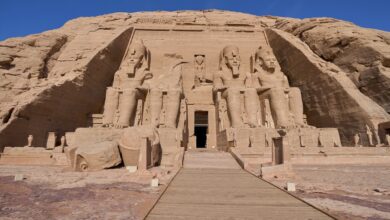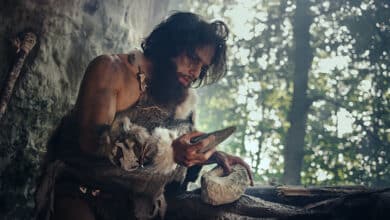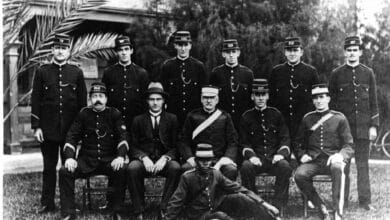Were Vikings Real?
The Vikings were feared, brutal, honorable, cruel, skillful, and revered, among many other qualities. For a while, this group of fierce warriors was unrivaled in their region.
Who, exactly, were the Vikings, though? Whence did they come, and what became of them afterward?
This essay will explore the deep history of the Viking culture and people in order to answer these concerns and more.
From Where Did the Vikings Emerge?
Further research revealed that the Anglo-Saxons’ identification of the Vikings as Danes was inaccurate. The Vikings were a multicultural group of people who came from all across the Scandinavian peninsula.
Later on, the Scandinavian region would actually have difficulties keeping these people inside its borders as they surged forth, exploring, trading with, and pillaging wide swaths of Europe during the time known as the Viking Age.
From around 700 to 1100 CE, historians identify the period now known as the “Age of Vikings,” during which the Vikings terrorized their enemies by plundering coastal towns and wreaking devastation inland.
Just Who Were the Vikings?
The Scandinavian Vikings were famously fierce fighters. As these northern warriors frequently plundered vulnerable coastal towns and monasteries across Europe, they were frequently portrayed as villains or barbarians. But it doesn’t mean that’s all there is to Vikings; it only means that this explanation falls short.
Although it’s tempting to dismiss the question of who the Vikings were by appealing to a stereotypical Hollywood portrayal or definition, doing so would be at odds with the evidence, which shows that the Vikings were, at heart, a peaceful people who sought only to go about their daily lives unmolested.
The Vikings were multifaceted people, including both fierce warriors and more peaceful farmers, traders, sailors, and settlers.
What Exactly Does the Term “Viking” Refer to?
The very name Viking refers to a pirate or a raider. One may safely presume that many individuals living in pre-Christian Scandinavia did not identify as Vikings.
Even yet, to the unfortunate victims of these raids, all of the raiders were simply known as “Vikings” before they were ruthlessly slaughtered.
When it came to feeding their people, the Vikings couldn’t just go on raids in far-flung lands. There was a requirement for them to establish permanent communities, cultivate the land, and care for cattle.
For others, trading meant venturing across continents—sometimes all the way to Constantinople, in what is now Turkey—by way of Russia. Some, though, would go on to Baghdad, Iraq, demonstrating that the Vikings’ influence extended even to that distant city.
The Language of the Vikings: What Was It Like?
The Vikings’ global expansion necessitated learning the languages of the many peoples they encountered along the way. Nonetheless, the Vikings’ native tongue was Old Norse, which was spoken only in their homeland.
Ancient Scandinavians used the North Germanic language known as Old Norse to communicate with one another. This included the Faroe Islands, Iceland, and Greenland.
Old Norse was also spoken in some areas of Russia, France, the British Isles, and Ireland, which is not unexpected considering the pervasive Viking impact that area would have experienced at the time.
Historians have found several runes and sculptures attesting to the use of Old Norse, which dates back to antiquity. Whether you refer to it as Younger Futhark or Scandinavian runes, it’s a runic script.
It is a runic alphabet of 16 letters that was widely employed during the Viking Period but eventually died out as the Vikings’ influence and strength waned.
How Did the Vikings Make Their Money?
As the Vikings were among the best sailors of their day, they were able to travel great distances both on land and at sea. That’s why they were so successful against so many different kinds of opponents.
But what did they exchange for goods and services as they journeyed? How did they pack their bags?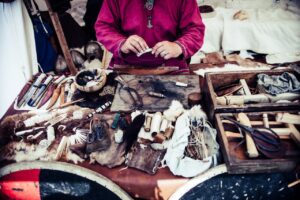
Silver, silk, spices, wine, jewelry, glassware, and pottery were all sought-after commodities by Viking merchants. All of these were in high demand in the regions from which the Vikings emigrated.
In order to acquire these items, Viking merchants would exchange domestic goods such as honey, tin, wheat, timber, iron, fur, leather, fish, and walrus ivory.
Slavery was a sad part of Viking culture, unfortunately.
Invasion of Europe by the Vikings
Notwithstanding the fact that not all Vikings behaved in a barbaric fashion, it is undeniable that the Vikings gained their reputation as vicious pirates and pillagers. They were proud murderers who told stories of their conquests to their families upon their return from a successful retaking mission.
In 787, the first known raid on the Anglo-Saxon territory took place, marking the beginning of a conflict that would persist for many decades.
When the Vikings were first discovered off the British shore, the locals stupidly welcomed them. The residents of the area marched unarmed to the coast to meet them. They quickly realized their error as the Viking horde swept inland and slaughtered hapless civilians along the coast.
Vikings Set Sail for Britain and Ireland
The native Britons had no idea what to make of the Vikings, who were unafraid to plunder previously sacrosanct locales like Christian monasteries in search of gold, silver, cattle, and other kinds of riches.
This was unprecedented, but for the Vikings anticipating a cakewalk, it was a no-brainer. As they were a heathen people and didn’t practice the religion that was prevalent in these alien places, there was no moral ambiguity in sacking these sacred monasteries.
Battles between the Vikings and the Anglo-Saxons grew bloodier and more numerous as the years passed.
An Army of Vikings
Hvitserk, Ivar the Boneless, and Ubba Ironside, three of famous warrior Ragnar Lodbrok’s five sons, commanded this force. Historians have no idea how big the army was, although they believe it was among the largest armies of the day.
A total of 14 years were spent on this dreadful battle against the Anglo-Saxon kingdoms.
Edmund the Martyr, king of East Anglia, tried to placate the invading army by offering them a large number of horses as a present. It should come as no surprise that the Viking warriors rejected this gift and ravaged East Anglia, eventually leading to Edmund’s death.
Where Did All the Vikings Go?
Over the 14 years of conflict, the Vikings never stopped their destructive onslaught against the Anglo-Saxon Kingdoms.
During a period of years of conflict, the Great Heathen Army eventually came to conquer the Anglo-Saxon kingdoms of Northumbria, East Anglia, and a sizable piece of Mercia in Northern England.
The Viking assault, however, slowed as internal strife and the splitting of the army led to a stalemate.
Who Dethroned the Vikings?
That was the beginning of the end for the Vikings’ campaign as they were decisively defeated by Wessex, the only region to fight back against the invaders.
In 878, under King Alfred’s leadership, the soldiers of Wessex destroyed half of the Viking forces in the Battle of Edington, thereby ending the Vikings’ ambitions to dominate all of the Angl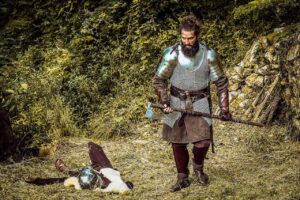 o-Saxon Kingdoms.
o-Saxon Kingdoms.
This Viking defeat bought Wessex some time to organize an effective defense strategy, including the construction of sturdy walls and a professional army.
The northern half of Britain was ruled by the Vikings, while the southern half was under the sovereignty of Wessex and King Alfred.
Much of the rest of the Viking Age would continue like this.
Unknown Facts About the Vikings
The Vikings Skied
Skiing is “recreation, sport, and means of transportation involving the use of a pair of long, flat runners called skis to move through snow,” as defined by Britannica.com.
Skiing served the Vikings well in the cold winter temperatures of Scandinavia, where it was employed for travel, hunting, and recreation. Incredibly, Vikings liked to ski for fun, according to Historyonthenet.com.
Prizes were awarded to the finest skiers among the Viking nobility in annual tournaments. Ullr, also known as the god of hunting, the bow and shield, and Thor’s stepson, was worshipped as the deity of skiing.
The Vikings Loved Hair Bleaching
Women with blond hair have traditionally been praised as the “fairest of them all” in Western beauty ideals. Several of history’s most iconically beautiful women—Marilyn Monroe, for one—happened to be blonde.
Blondes, it seems, were a huge hit with the Vikings, especially with the men. History101.com reports that Viking males (and occasionally women) would use soap containing large amounts of lye to lighten their hair by removing the color. The treatment not only made their hair lighter, but it also reduced their instances of head lice.
Maybe Not So Tall After All
Most people’s mental image of a Viking is someone who is tall with broad shoulders and rippling muscles. That stereotype, however, is completely inaccurate, as evidenced by the information provided by History101.com.
Most Norsemen, including Vikings, stood little more than 5 feet 7 inches tall, with women standing no more than 5 feet 2 inches.
While it’s true that some of their soldiers would need to be strong, the vast majority were likely farmers. Therefore, they were likely not particularly muscular.
Never Been Part Of A Group
Similar to how we like to conceive of the Greeks and Romans as a unified people, we tend to lump the Vikings together. As History.com points out, however, the Vikings were never a single cohesive people.
No two Viking groups would have recognized each other. Though they originated in what are now the countries of Norway, Sweden, and Denmark, the Vikings themselves were a mishmash of many tribes, each of which had its own chief.
There was even warfare between these groups of people over territory and other resources. The Vikings were responsible for widespread destruction both in their homeland and abroad.
Used A Very Unusual Firestarter
Touchwood, a sort of fungus, was used by the Vikings, as reported by PrimalSurvivor.net. It’s native to the temperate regions of Europe, North America, and Asia, and it’s already well-known for its usefulness as a tinder for fires.
But, the Vikings improved upon this already-excellent material. They’d slice the fungus, pound it into strips, and then soak it in… pee.
Because of the sodium nitrate content, the fungus strips would smolder rather than burn when lighted, allowing the Vikings to transport a fire over great distances and for longer periods of time.
Conclusion
The history of the Vikings is as vast as the people they explore. The Scandinavian nations of Norway, Denmark, and Sweden were home to the seafaring Vikings (in Danish, the Vikinger).
They gained widespread recognition throughout the eighth to eleventh centuries as skilled soldiers, astute merchants, and bold explorers.
They came to America a thousand years before Columbus and left a legacy that has been uncovered as far east as Russia. This is the authentic and real history of the Vikings.
